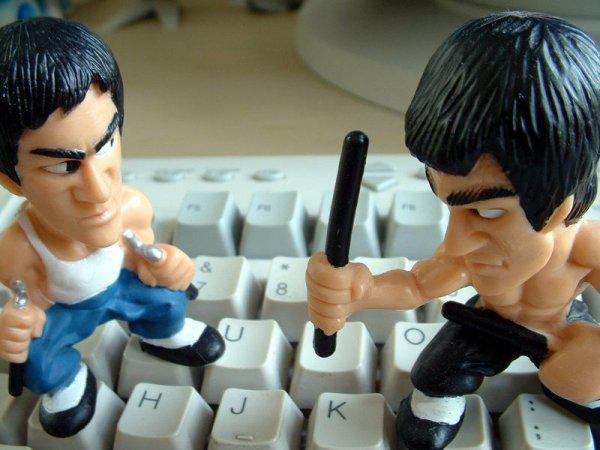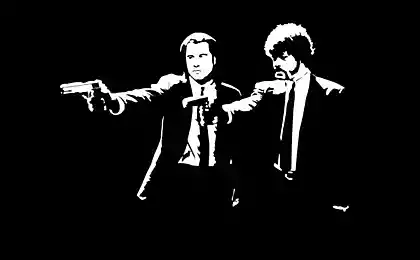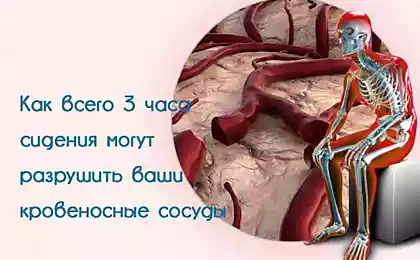891
If you work a lot with the computer
If you work a lot with the computer (let's assume it is), then you know that, for fast and productive work should try to do without the mouse. You, of course, use the well-known key combinations.
But whether you use all the opportunities offered by the program to quickly switch?

Firefox
- Raise or lower the page. Space - drop page, Shift + space bar - to raise the page.
- To find. Ctrl + F or Alt-N to the next page.
- Add this page to your bookmarks. Ctrl + D.
- Quick search. /.
- New tab. Ctrl + T.
- Go to the search bar. Ctrl + K.
- Go to the address bar. Ctrl + L.
- Increase the size of the text. Ctrl + =. Reduce the size of tekstaCtrl + -
- Close the tab. Ctrl-W.
- Refresh the page. F5.
- Go to the homepage. Alt-Home.
- Restore the page is closed. Ctrl + Shift + T.
- Bookmarks with keywords. This is the most productive. If you frequently visit a website, you are doing a bookmark (of course!), Then go to the properties tab (click with right mouse button). Add a short keyword in the keyword search field, save, and then you can simply enter in the address bar (Ctrl + L) is the key word, and immediately to the site.
Gmail
- Write a new message. C.
- Reply to the letter. R.
- Respond vsem.A.
- Send a letter. F.
- Save the current message and open the next pismo.Y + O.
- Delete a letter and open the next. # + O (or Shift-3 + O).
- Send a written letter. Tab-Enter.
- Search. /.
- Navigation. Moving down vverhK J, and the list of contacts.
- List of messages. N and P move the cursor to the next or previous message, and the message list.
- Ignore. M- letters with distinguished addresses are no longer exposed to the list of incoming messages and archived.
- Select a conversation. X - chain letters will be selected. It can archive, apply a label to it and choose for her action.
- Save as draft. Control-S.
- Go to the message list. G + I.
- Go to the marked letters. G + S.
- Go to the address book. G + C.
Google Reader
- Go to the top / bottom records. J, and K.
- Go up / down the page. Spacebar or Shift-spacebar.
- Select an asterisk. S.
- Put in the general section. Shift-S.
- Mark as read / unread. M.
- Open. V source opens in a new window.
- Shortcuts.? displays on the screen all the keyboard shortcuts.
Windows
- Create shortcuts to quickly switch. To create a keyboard shortcut to quickly switch, right-click on the icon of creating shortcuts switch (there is one on your desktop), and enter the combination. For example, such as Ctrl-Alt-W for the program Word.
- Switch between windows. Alt-Tab - select the one you want, then lower the key. Or hold down the Windows, press Tab to go through the buttons on the taskbar, and to find the window you want, and then, having found it, then press Enter. If you add the Shift key to any of these methods, the choice of windows will be carried out in the reverse direction.
- Go to the desktop. Key Windows-D.
- Context menu. Instead of having to right click, click Shift-F10. Then scroll up or down using the arrow keys up and down.
- Shut down. To quickly turn off the computer, press the Window, and then U. On this button you can press on S to pause, to turn on U or R to reload.
- The most common. You, of course, you know, but for beginners to mention the most famous combinations: Ctrl-O- open, Ctrl-S - save, Ctrl-N - open a new document, Ctrl-W - to close the window, Ctrl-C -kopirovat, Ctrl -V - paste, Ctrl-X - cut. Ctrl-Z - undo (reverse), Ctrl-Y - undo (forward). To see the contents of the clipboard into MS Office, press Ctrl-C twice. Ctrl-Home- go to the top of the document, Ctrl-End - go to the end.
- Menu. When you press Alt, a menu appears in which to work, using the arrow keys. Alt plus the underlined letter of each menu option leads to the use of this option. Or just remember the keyboard shortcut for this option to use more faster.
- Explorer Windows (Explorer). Windows-E - My computer starts up.
Then you can use the following combinations.
- Display subfolders. NUM LOCK + Asterick Sign (*).
- Show the content. NUM LOCK + PLUS Sign (+).
- Abandon selected. NUM LOCK + Minus Sign (-).
- Select the text. In the document, use Ctrl-Shift plus the arrow keys to quickly select parts of the text. Ctrl-A- select all the text.
- Remove all. Shift-Delete - delete a document permanently without sending it to the Trash.
Operating system Mac
- Switch Dock. Option-Cmd-D - show / hide the Dock.
- Hide all the rest. Cmd-Option-H hides all other windows except the one in which you are. Facilitates your screen.
- Close a window. Cmd-W closes the active window open. Option-Cmd-W closes all open windows.
- Open the directory. Option-Cmd-right arrow - deploy directory and subdirectories in the list in the Finder.
- Forward and backward. Cmd- [andCmd-] worked with the Finder, Safari, and Firefox.
- Copy screen. Cmd-Shift-3 - for the entire screen. Cmd-Shift-4 - creates the border to copy the selected part of the screen.
- Exit. Shift-Cmd-Q - output realized after 2 minutes. Shift-Option-Cmd-Q - output realized immediately.
- Empty trash. Shift-Cmd-Delete.
- New window in Safari. Cmd-T.
- Help. Cmd-shift -? ..
- Load CD. Press C during startup (just after the music) download CD.
- Boot from another department. Option-Cmd-Shift-Delete- begins to boot, until you find another department, such as a CD or disk.
- Additional Information. Cmd-Option-I open a window with additional information that allows you to see and compare in one window many files and folders.
- Sleep mode, restart and shutdown. Cmd-option-eject, Cmd-ctrl-eject, and Cmd-Option-ctrl-eject.
- Forced off. Cmd-opt-Esc - basic, but very useful.
- Fast protocol FTP. Cmd-K will open a connection to the server.
Excel
- Edit cell. F2. Perhaps this is the main key is that you need to know.
- Select the column. Ctrl-Space.
- Select a number. Shift-spacebar.
- The currency format. Ctrl + Shift + 4 (or more precisely, Ctrl + $).
- Interest format. Ctrl + Shift + 5 (or more precisely, Ctrl +%).
- By the beginning. Ctrl-Home makes the cell A1aktivnoy.
- Enter the current date. Ctrl-Colon.
- Enter the current time. Ctrl-division sign.
- Copy of the cell. Ctrl - double quotes will copy the top of the cell (no formatting).
- Format Cells. Ctrl-1 will open the format cells.
- Navigation. Ctrl-PageUp and Ctrl-PageDown.
- Multiple input. Ctrl-Enter instead of just Enter, and the data entered in one of a few selected cells will transfer the data to all other selected cells.
Word
- Default Formatting. Ctrl-Space includes the normal style for the current selection and the subsequent text input.
- Space between paragraphs. Ctrl-0 (zero on top of the keyboard) adds or removes the interval before the current paragraph. Ctrl-1 (the top of the keyboard) - single line spacing of the paragraph. Ctrl-2 (above the keyboard) - a double line spacing of the paragraph. Ctrl-5 (above the keyboard) changes the line spacing to one and a half.
- Updating the date and time. Alt-Shift-D - making updates to date. Alt-Shift-T - making updates of time.
Internet Explorer
- Navigation. Alt-Left Arrow and Alt-Right Arrow transferred to the previous and next line. Ctrl-N opens a new window.
- Favorites. Ctrl-D - to add the current page to your list of favorites. Ctrl-B - open watchlist.
- Jump to the address. To navigate quickly press Ctrl-L and enter the address.
- By the beginning. Alt-Homeperenesёt you to the homepage.
- Update the current page. F5.
- Nayti.Ctrl-F.
Outlook
- Send / Receive. In order to receive or send mail to an account the default, press F5.
- Go to your Inbox. Ctrl + Shift + I.
- Go to the Outbox folder. Ctrl + Shift + O.
- Respond to the message. Ctrl + R.
- Mark Read. Ctrl + Q
- Create a new message. Ctrl + Shift + M.
- Create a new contact. Ctrl + Shift + C.
- Create a new appointment. Ctrl + Shift + A.
But whether you use all the opportunities offered by the program to quickly switch?

Firefox
- Raise or lower the page. Space - drop page, Shift + space bar - to raise the page.
- To find. Ctrl + F or Alt-N to the next page.
- Add this page to your bookmarks. Ctrl + D.
- Quick search. /.
- New tab. Ctrl + T.
- Go to the search bar. Ctrl + K.
- Go to the address bar. Ctrl + L.
- Increase the size of the text. Ctrl + =. Reduce the size of tekstaCtrl + -
- Close the tab. Ctrl-W.
- Refresh the page. F5.
- Go to the homepage. Alt-Home.
- Restore the page is closed. Ctrl + Shift + T.
- Bookmarks with keywords. This is the most productive. If you frequently visit a website, you are doing a bookmark (of course!), Then go to the properties tab (click with right mouse button). Add a short keyword in the keyword search field, save, and then you can simply enter in the address bar (Ctrl + L) is the key word, and immediately to the site.
Gmail
- Write a new message. C.
- Reply to the letter. R.
- Respond vsem.A.
- Send a letter. F.
- Save the current message and open the next pismo.Y + O.
- Delete a letter and open the next. # + O (or Shift-3 + O).
- Send a written letter. Tab-Enter.
- Search. /.
- Navigation. Moving down vverhK J, and the list of contacts.
- List of messages. N and P move the cursor to the next or previous message, and the message list.
- Ignore. M- letters with distinguished addresses are no longer exposed to the list of incoming messages and archived.
- Select a conversation. X - chain letters will be selected. It can archive, apply a label to it and choose for her action.
- Save as draft. Control-S.
- Go to the message list. G + I.
- Go to the marked letters. G + S.
- Go to the address book. G + C.
Google Reader
- Go to the top / bottom records. J, and K.
- Go up / down the page. Spacebar or Shift-spacebar.
- Select an asterisk. S.
- Put in the general section. Shift-S.
- Mark as read / unread. M.
- Open. V source opens in a new window.
- Shortcuts.? displays on the screen all the keyboard shortcuts.
Windows
- Create shortcuts to quickly switch. To create a keyboard shortcut to quickly switch, right-click on the icon of creating shortcuts switch (there is one on your desktop), and enter the combination. For example, such as Ctrl-Alt-W for the program Word.
- Switch between windows. Alt-Tab - select the one you want, then lower the key. Or hold down the Windows, press Tab to go through the buttons on the taskbar, and to find the window you want, and then, having found it, then press Enter. If you add the Shift key to any of these methods, the choice of windows will be carried out in the reverse direction.
- Go to the desktop. Key Windows-D.
- Context menu. Instead of having to right click, click Shift-F10. Then scroll up or down using the arrow keys up and down.
- Shut down. To quickly turn off the computer, press the Window, and then U. On this button you can press on S to pause, to turn on U or R to reload.
- The most common. You, of course, you know, but for beginners to mention the most famous combinations: Ctrl-O- open, Ctrl-S - save, Ctrl-N - open a new document, Ctrl-W - to close the window, Ctrl-C -kopirovat, Ctrl -V - paste, Ctrl-X - cut. Ctrl-Z - undo (reverse), Ctrl-Y - undo (forward). To see the contents of the clipboard into MS Office, press Ctrl-C twice. Ctrl-Home- go to the top of the document, Ctrl-End - go to the end.
- Menu. When you press Alt, a menu appears in which to work, using the arrow keys. Alt plus the underlined letter of each menu option leads to the use of this option. Or just remember the keyboard shortcut for this option to use more faster.
- Explorer Windows (Explorer). Windows-E - My computer starts up.
Then you can use the following combinations.
- Display subfolders. NUM LOCK + Asterick Sign (*).
- Show the content. NUM LOCK + PLUS Sign (+).
- Abandon selected. NUM LOCK + Minus Sign (-).
- Select the text. In the document, use Ctrl-Shift plus the arrow keys to quickly select parts of the text. Ctrl-A- select all the text.
- Remove all. Shift-Delete - delete a document permanently without sending it to the Trash.
Operating system Mac
- Switch Dock. Option-Cmd-D - show / hide the Dock.
- Hide all the rest. Cmd-Option-H hides all other windows except the one in which you are. Facilitates your screen.
- Close a window. Cmd-W closes the active window open. Option-Cmd-W closes all open windows.
- Open the directory. Option-Cmd-right arrow - deploy directory and subdirectories in the list in the Finder.
- Forward and backward. Cmd- [andCmd-] worked with the Finder, Safari, and Firefox.
- Copy screen. Cmd-Shift-3 - for the entire screen. Cmd-Shift-4 - creates the border to copy the selected part of the screen.
- Exit. Shift-Cmd-Q - output realized after 2 minutes. Shift-Option-Cmd-Q - output realized immediately.
- Empty trash. Shift-Cmd-Delete.
- New window in Safari. Cmd-T.
- Help. Cmd-shift -? ..
- Load CD. Press C during startup (just after the music) download CD.
- Boot from another department. Option-Cmd-Shift-Delete- begins to boot, until you find another department, such as a CD or disk.
- Additional Information. Cmd-Option-I open a window with additional information that allows you to see and compare in one window many files and folders.
- Sleep mode, restart and shutdown. Cmd-option-eject, Cmd-ctrl-eject, and Cmd-Option-ctrl-eject.
- Forced off. Cmd-opt-Esc - basic, but very useful.
- Fast protocol FTP. Cmd-K will open a connection to the server.
Excel
- Edit cell. F2. Perhaps this is the main key is that you need to know.
- Select the column. Ctrl-Space.
- Select a number. Shift-spacebar.
- The currency format. Ctrl + Shift + 4 (or more precisely, Ctrl + $).
- Interest format. Ctrl + Shift + 5 (or more precisely, Ctrl +%).
- By the beginning. Ctrl-Home makes the cell A1aktivnoy.
- Enter the current date. Ctrl-Colon.
- Enter the current time. Ctrl-division sign.
- Copy of the cell. Ctrl - double quotes will copy the top of the cell (no formatting).
- Format Cells. Ctrl-1 will open the format cells.
- Navigation. Ctrl-PageUp and Ctrl-PageDown.
- Multiple input. Ctrl-Enter instead of just Enter, and the data entered in one of a few selected cells will transfer the data to all other selected cells.
Word
- Default Formatting. Ctrl-Space includes the normal style for the current selection and the subsequent text input.
- Space between paragraphs. Ctrl-0 (zero on top of the keyboard) adds or removes the interval before the current paragraph. Ctrl-1 (the top of the keyboard) - single line spacing of the paragraph. Ctrl-2 (above the keyboard) - a double line spacing of the paragraph. Ctrl-5 (above the keyboard) changes the line spacing to one and a half.
- Updating the date and time. Alt-Shift-D - making updates to date. Alt-Shift-T - making updates of time.
Internet Explorer
- Navigation. Alt-Left Arrow and Alt-Right Arrow transferred to the previous and next line. Ctrl-N opens a new window.
- Favorites. Ctrl-D - to add the current page to your list of favorites. Ctrl-B - open watchlist.
- Jump to the address. To navigate quickly press Ctrl-L and enter the address.
- By the beginning. Alt-Homeperenesёt you to the homepage.
- Update the current page. F5.
- Nayti.Ctrl-F.
Outlook
- Send / Receive. In order to receive or send mail to an account the default, press F5.
- Go to your Inbox. Ctrl + Shift + I.
- Go to the Outbox folder. Ctrl + Shift + O.
- Respond to the message. Ctrl + R.
- Mark Read. Ctrl + Q
- Create a new message. Ctrl + Shift + M.
- Create a new contact. Ctrl + Shift + C.
- Create a new appointment. Ctrl + Shift + A.























